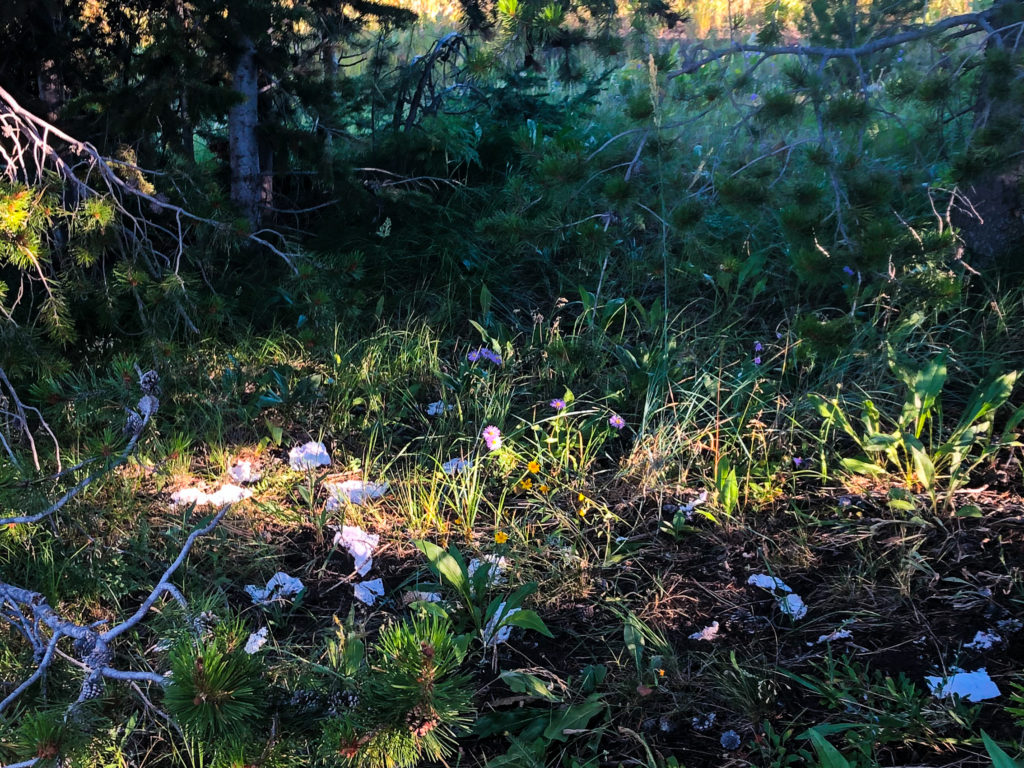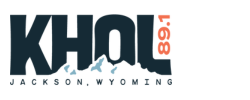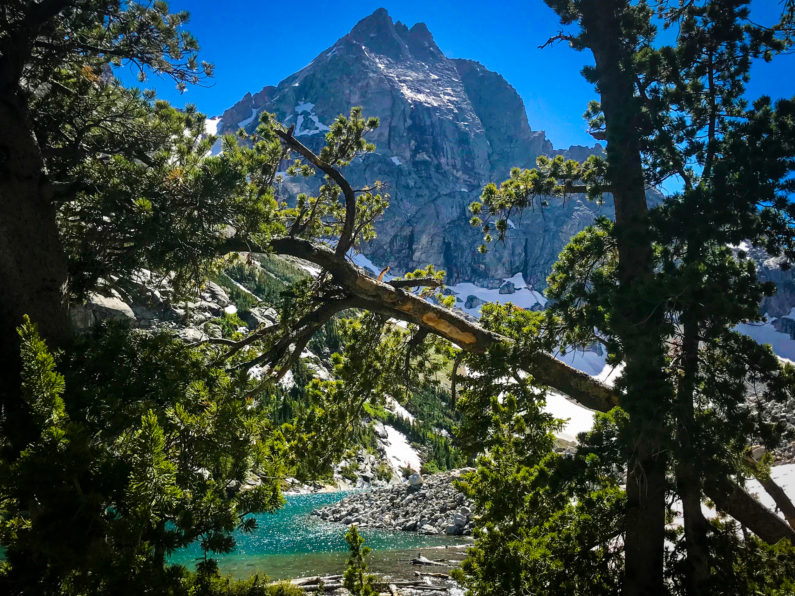National parks are in the spotlight this summer, and not just because the president can’t pronounce Yosemite.
While visitation numbers for July have not yet been released, it’s clear that plenty of cooped up people are putting COVID fears in check and heading into the great outdoors. Grand Teton National Park clocked 574,000 visitors in June. That’s about 200,000 less than the same month in 2019, but visitor numbers appear to have spiked in July. Parking areas in popular spots like String Lake, Jenny Lake, and Colter Bay are filled to capacity by mid-morning. Park campgrounds are full by noon. With limited lodging in Grand Teton, campers are flooding Bridger Teton National Forest where waiting lines for campsites start in the wee hours.
The influx of tourists here is rattling some locals’ nerves with worries about visitors bringing COVID or trashing beloved sites. Increasingly, Jackson has an ambivalent relationship to the tourism that fuels its economy. Locals like to think of the forests and parks as their backyards. Meanwhile, visitors flock to national parks and public lands they consider theirs. This tension is more palpable than ever in the summer of COVID, when residents feel ousted and tourists line up in droves to hike, float, camp and escape the stressors of the pandemic. This scenario has left some to wonder if Jackson’s wild places will survive the crucible of summer 2020.
“It’s Good For Our Souls”
One recent morning at Grand Teton’s Bradley-Taggart trailhead, Mandy Flaming, her husband and their two teenage daughters had just returned to their car at 10 a.m. They’d woken five hours earlier at their lodging in Victor, Idaho, and driven over Teton Pass to get to the trailhead early.
“We saw the reflection of the mountains on the lake,” Flaming said, lowering the bandana around her mouth and nose. “It was so quiet.”
The Fort Worth, Texas, family are regular visitors to national parks. This summer in particular the family needed escape. “We’ve been stuck inside like everyone else,” Flaming said. “It felt like a risky venture to drive this far during COVID. But we are so glad to be here. It’s good for our souls.”
By the time the Flamings were headed back to Victor, cars were lined 20 to 30 deep on the park road near the trailhead. Vickie D’Alessandro and Steve Rigal were returning to their car after an early start like the Flamings. The Florida couple wore their masks while hiking. Rigal is 75 and knows his age puts him at higher risk for COVID.
“I’m at the top of the food chain to get sick,” he said.
When they first rolled into town two days prior, Rigal and D’Alessandro found that they had arrived too late to nab a campsite. They stayed in their camper on the side of the Gros Ventre road. Several other parties pitched their tents nearby. The next day, they waited in line for an hour to get into the Gros Ventre campground. Once there, they were happy with the accommodations.
“The campsites are spread out, so we aren’t on top of one another,” D’Alessandro said. She was impressed by the one person or one family at a time policy for restrooms, as well as the sturdy bear boxes for their food.
As the weekend approached, the couple said they would up sticks for less popular terrain in Idaho. They had enjoyed their time but worried about weekend crowds. Though they said fellow campers had been respectful, not enough hikers practice COVID-era trail etiquette. Speaking through his mask, Rigal said, “we move off the trail for other people, but not the other way around.”

Visitors Vickie D’Alessandro and Steve Rigal say they are attempting to practice safe trail etiquette. They wear masks and move to the side of the trail when passing other folks. The same cannot be said of those they encounter, Rigal said. (Meg Daly/KHOL)
The park encourages face coverings, while masks are mandatory in Teton County—the park’s gateway community. Some hikers and campers have gotten the message, others are going mask-free, despite crowded trails. The park said early on that it would not be “the mask police.” Instead acting superintendent Gopaul Noojibail has said that park employees would model the behavior they expect to see. “Visitors are going to be urged to be responsible and do their part,” Noojibail said at a COVID community update in May.
“Visitors are going to be urged to be responsible and do their part.”
– Gopaul Noojibail, Grand Teton acting superintendent
But there are significantly fewer employees on hand this year to do behavior modeling for visitors. Noojibail said he had to cut his seasonal staff of 500 by 60 percent. He wanted to make sure each staff person had a bedroom, bathroom and kitchen to themselves, to cut down on close contact between employees and to enable an employee to self-isolate if needed. “We want to help make sure we don’t become part of the problem,” he said.
Limited staffing has resulted in a change in operations, Denise Germann, Grand Teton public affairs officer, said. Only a few visitor centers are open—Colter Bay, Jenny Lake Ranger Station, and the Craig Thomas Discovery and Visitor Center. There are no ranger-led hikes in the park this year.
Grand Teton conducts COVID-19 surveillance testing of park employees and staff at larger concessionaires. There have been no reported cases so far. St. John’s Health needs to keep it that way. The hospital has limited capacity to begin with and is currently out 24 staff due to COVID infections and quarantines. The hospital could quickly become overwhelmed if a number of park staff or visitors needed immediate hospitalization.
Visitors may not be considering local hospital capacity when they escape to the woods, if the Bradley-Taggart trailhead is any indication. Roughly 30 percent of hikers from all across the nation wore masks that day. The parking lot contained cars from Oregon, Washington state, Georgia, Colorado, Missouri, and New York, among other states. There were a number of Wyoming 22 plates dotted in there too.
One of those local hikers was Lois O’Neal. A part-time resident, O’Neal rises early when she wants to hike in the park. She knows the early hours are the best times to see wildlife and enjoy peace and quiet.
Taking down her mask as she arrived at her car, O’Neal said she didn’t think that the park seemed busier than any other summer. But she sees the particular appeal of national parks amid the pandemic.
“Maybe coming here is a way people are dealing with the constraints of life in the cities,” she said. Everyone she has encountered has been “exceedingly polite.” Unlike Regal and D’Alessandro, O’Neal reported seeing most people wearing masks or at least putting them on when passing others on the trails.
“I think hiking is really a risk-free activity,” O’Neal said. “It’s necessary for the soul right now. Especially with everything pushing on us—the election year and the pandemic.”
Other residents are eschewing the parks altogether and feeding their souls farther afield. Phil Leeds, former owner of Skinny Skis, says the congestion on park trails and parking lots is a turn-off, not to mention a health risk. “My wife and I are avoiding the parks,” he said. “We are going to wait until September and then carefully assess what is going on.”
Leeds notes that no one anticipated how crowded Jackson would be this summer. He said anxiety is pervasive among business owners he knows. They are happy to be doing well financially, but worry about the increase in COVID cases that has burgeoned with the amount of tourists.
“Nobody I know is feeling comfortable with it,” Leeds said.
“I don’t think there’s a local in the valley who is not saying, ‘I can’t wait for September.'”
– Phil Leeds
An additional impact on the forests and parks may be the local population. While residents of big cities may be visiting the valley, Jackson residents are sticking close to their beloved parks. A recent report by the travel and tourism board showed that the number of full-time residents in town is 25 to 30 percent higher than normal.
“When we compound the full-time residents being higher than normal, visitation being on or above average, and the capacity being decreased, I think that’s the stress everyone’s feeling right now,” Brian Modena, Travel and Tourism Board secretary, said at a July 22 Economic Recovery Task Force meeting.
The Demand for Public Lands
With lodging options limited—overall occupancy in the valley and the parks is hovering above 80 percent—camping overflow is landing on forest lands. Bridger Teton National Forest public affairs officer Mary Cernicek said they are seeing record numbers of campers, some local, many not.
Cernicek says a lot of times such folks are new to camping and the rules of the wilderness.
This has led to a notable wear and tear on campsites. Of particular concern are unattended or abandoned campfires amid high fire danger, improper food storage, and a rather gross disregard for proper disposal of human waste.

Human waste near a campsite on Shadow Mountain. Porta potties are available here but not everyone is using them. (Lesley Williams Gomez)
Cernicek said patrollers are finding numerous makeshift fire rings and surrounding sites littered with half-burned wood. Not only is it unsightly, she said, but the fire danger is also frightening.
Like the parks, the Forest Service is short-staffed this summer. Seasonal employees and volunteers weren’t as available due to concerns about traveling for their summer jobs.
Forest service patroller Lesley Williams Gomez has been working overtime to try to mitigate the impact of campers. To date, she and fellow patrollers have found 160 abandoned campfires. Speaking by cell phone from Shadow Mountain Monday, Williams Gomez said she had spotted two new fire rings that had popped up overnight.
“These fire rings are not in smart places,” Williams Gomez said. Any wind shift could ignite surrounding vegetation.
Williams Gomez said campers are not bringing enough water to douse their fires. Instead, they are relying on dirt, which does not work to subdue all embers. She constantly reminds campers that they can only leave their fires when they are cold to the touch.
She said the influx of campers in the area is bittersweet. “Yes, it’s exciting that people are enjoying their public lands,” she said. “But that comes with a responsibility.”

Forest service patroller Lesley Williams Gomez said the dry grass around Shadow Mountain is cured enough to start carrying fire. She said fire restrictions are imminent. (Lesley Williams Gomez)
Cernicek, for her part, urges visitors to contact the ranger station before they arrive, to learn about camping protocols as well as available campgrounds. While she doesn’t want to turn anyone away, Cernicek does want them to learn safety and environmental stewardship so the forest can continue being a place of respite and renewal for everyone.
For Leeds, that respite simply doesn’t exist in the most popular destinations this summer. The trifecta of overflowing trailheads, bad behavior, and lack of staffing in the parks has resulted in what he calls “an awful situation.”
“I don’t think there’s a local in the valley who is not saying, ‘I can’t wait for September,’” he said.
Wyoming Untrapped co-founder Lisa Robertson worries that there is no normal to return to, in September or at any point in the future. A passionate wildlife advocate, Robertson fears that the very wildlife visitors come to see will be driven out of their habitat as people saturate the trails. “The parks are the only safe zones for wildlife and we are taking over,” she said. “Where are they going to go?”
From Robertson’s perspective, this summer has put the Greater Yellowstone Ecosystem on the map in a whole new way. She expects visitors and new residents to increase exponentially in the coming years.
“There’s no going back,” she said.
Robertson feels torn. She doesn’t want to prevent people from enjoying the outdoors. But she doesn’t want to see wildlands turn into amusement parks. “How are we going to save this wild country, and serve the needs of all visitors, and give wildlife a chance to survive?”
It may take more than a walk in the woods to inspire the solution.






